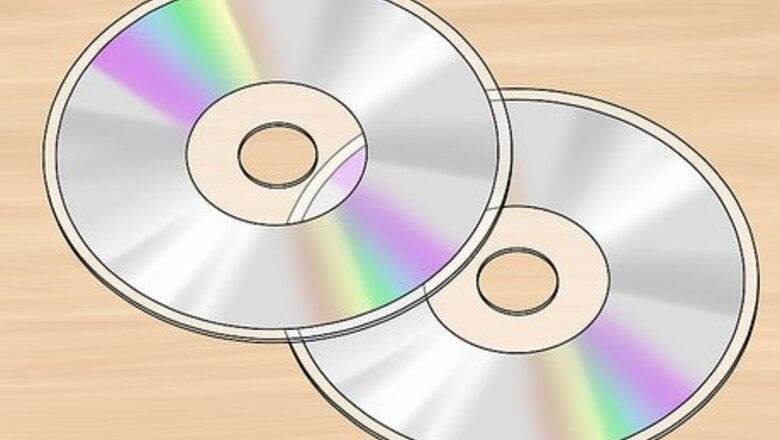
views
- Create an audio CD on iTunes, open the "Burn" menu. Click File > Burn Playlist to Disc. Check the "Audio CD" box and click Burn.
- Create a storage disk on Mac. Drag all your songs to a folder on your desktop. Copy and paste the songs you want to burn from the folder to the CD. Click File > Burn.
- Create an audio CD on Windows Media Player, click the Burn tab. Drag the songs you want to burn into the sidebar. Click "Menu" and check "Audio CD". Click Start burn.
- Create a storage disk on Windows. Select the songs you want to burn and click Share > Burn to disc > Burn > Finish.
Creating an Audio CD with iTunes
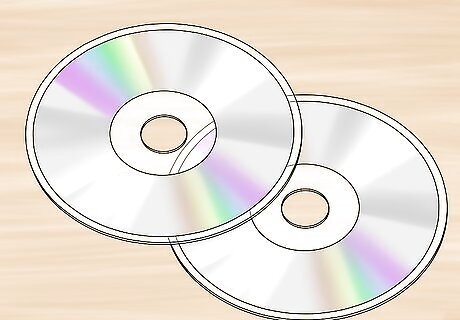
Make sure that you have an audio CD. Audio CDs differ from standard CDs in that they will automatically play audio when inserted into a CD player or stereo. When buying blank CDs, look for "recordable" or "audio" in the description.
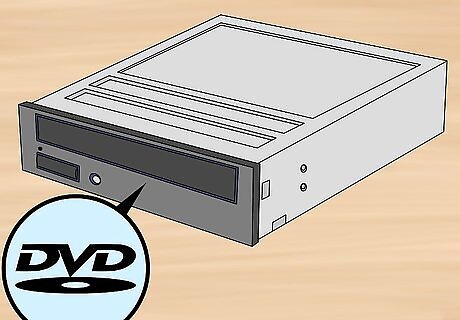
Obtain a DVD drive if necessary. Most Mac computers and many Windows computers don't ship with optical drives (also known as DVD drives) into which you can insert a CD, meaning you might need to buy a USB optical drive. You can find these in tech stores and online. If your computer has an optical drive, look for the word "DVD" on or near the drive. If you don't see "DVD" there, the drive that you have cannot burn CDs and you'll still need to buy an external one. Make sure that your optical drive has burn capabilities. This feature should be mentioned in the product description. If you're using a Mac, you'll need a USB-C optical drive, or a USB 3.0 to USB-C adapter.
Insert the audio CD into the DVD drive. Place the CD face-up in the DVD drive's tray, then close the tray.[Image:Burn Songs on to a CD Step 3 Version 6.jpg|center]]
Open iTunes. Its app icon resembles a multicolored musical note on a white background.
Click File. This option is in the top-left corner of the iTunes window (Windows) or in the top-left corner of the screen (Mac). A drop-down menu will appear.
Select New. It's near the top of the File drop-down menu.
Click Playlist. You'll find this in the New pop-out window. A text field will appear in the iTunes sidebar.
Enter a playlist name. Type in your preferred name for your playlist, then press ↵ Enter. This will create the playlist in the left-hand sidebar of the iTunes window.
Add songs to the playlist. Click and drag songs from your library onto the playlist's title, then drop them there. You can do this one at a time, or you can select multiple songs by holding down Ctrl or ⌘ Command while clicking songs. If you aren't in library view, click the Songs section below the "Library" heading in order to view a list of your songs. You can add up to 80 minutes of music to a standard audio CD.
Select the playlist. Once you've added 80 (or fewer) minutes of audio to the playlist, click the playlist to open it.
Open the "Burn" menu. Click File again, then click Burn Playlist to Disc near the top of the drop-down menu. A new window will appear.
Check the "Audio CD" box. It should be in the middle of the menu.
Click Burn. This is at the bottom of the menu. Doing so will prompt iTunes to begin burning your playlist's songs onto the CD. This process can take up to half a minute per song, so be patient.
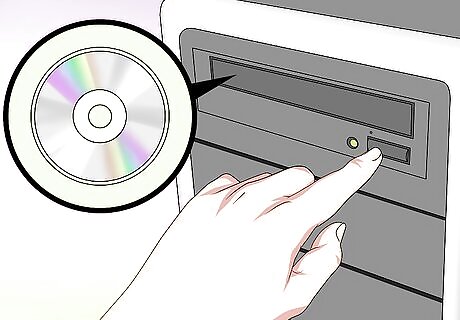
Eject your CD. When the burning process completes, you can eject your CD from the optical drive and try playing it in a stereo (or another computer) to test it.
Creating an Audio CD with Windows Media Player
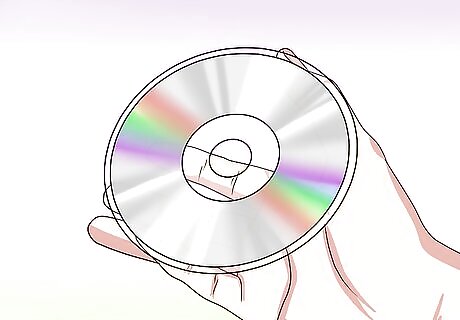
Make sure that you have an audio CD. Audio CDs differ from standard CDs in that they will automatically play audio when inserted into a CD player or stereo. When buying blank CDs, look for "recordable" or "audio" in the description.
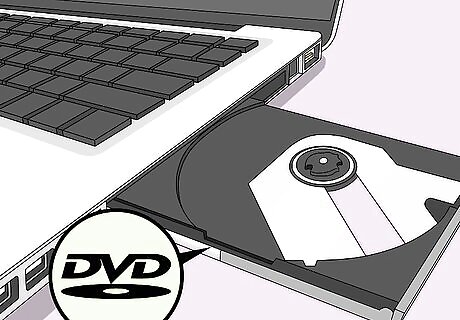
Obtain a DVD drive if necessary. Most Mac computers and many Windows computers don't ship with optical drives (also known as DVD drives) into which you can insert a CD, meaning you might need to buy a USB optical drive. You can find these in tech stores and online. If your computer has an optical drive, look for the word "DVD" on or near the drive. If you don't see "DVD" there, the drive that you have cannot burn CDs and you'll still need to buy an external one. Make sure that your optical drive has burn capabilities. This feature should be mentioned in the product description. If you're using a Mac, you'll need a USB-C optical drive, or a USB 3.0 to USB-C adapter.

Insert the audio CD into the DVD drive. Place the CD face-up in the DVD drive's tray, then close the tray.
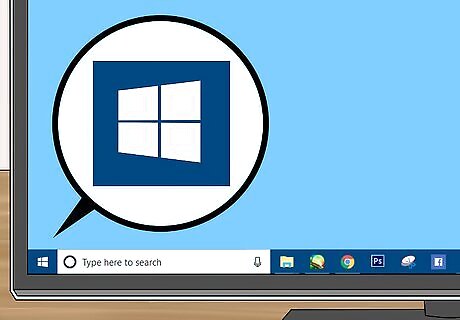
Open Start Windows Start. Click the Windows logo in the bottom-left corner of the screen.

Type in windows media player. This will search your computer for the Windows Media Player program. Not all Windows 10 computers have Windows Media Player built in, and you can no longer download Windows Media Player from Microsoft. If your computer doesn't have Windows Media Player, you'll need to use iTunes instead.
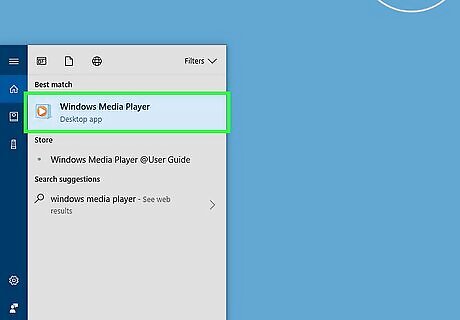
Click Windows Media Player. It's a blue, orange, and white icon at the top of the Start window.
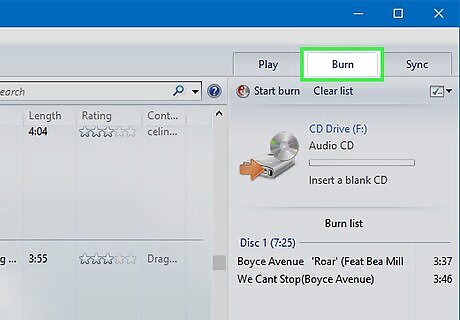
Click the Burn tab. You'll find this in the upper-right corner of the window.
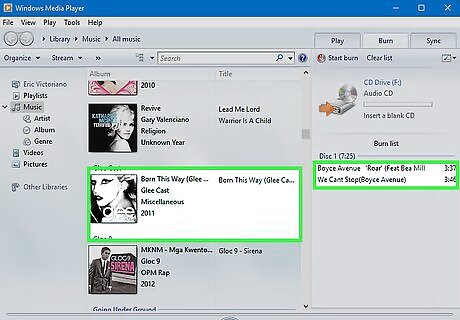
Add music to the CD. Click and drag songs that you want to burn into the "Burn" sidebar, which is on the right side of the Windows Media Player window. If you can't see individual songs, first click the Music tab on the left side of the window. You can add up to 70 minutes of audio without Windows Media Player attempting to split the audio onto a second disk.
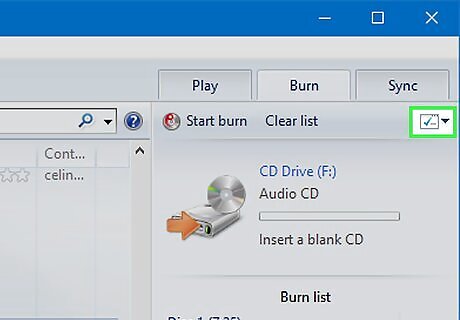
Click the "Menu" icon. It's a white box with green checkmarks in it. You'll find it just below the Sync tab in the "Burn" section. Clicking it prompts a drop-down menu.
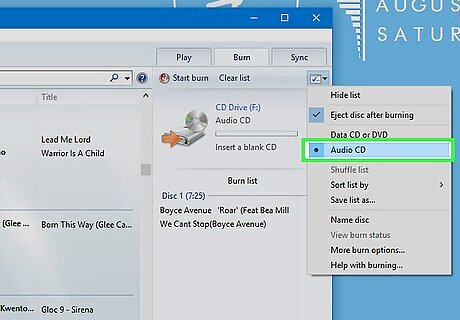
Check the "Audio CD" option. This is near the top of the drop-down menu.
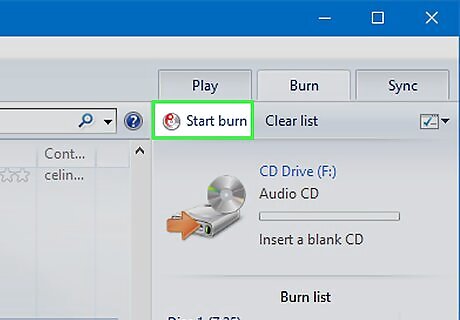
Click Start burn. It's in the upper-left corner of the "Burn" section. Your songs will begin burning onto the CD. Depending on the speed of your drive, this process may take several minutes.
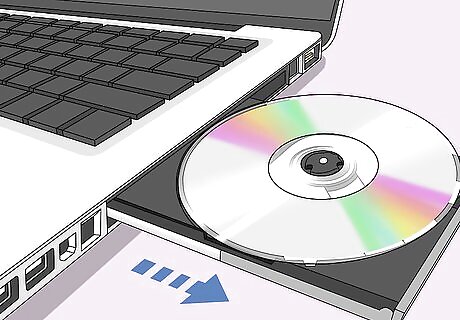
Eject your CD. When the burning process completes, you can eject your CD from the optical drive and try playing it in a stereo (or another computer) to test it.
Creating a Storage CD on Windows
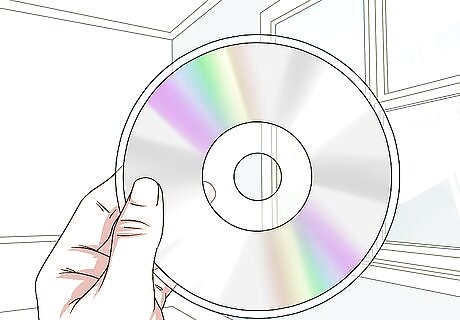
Make sure that you have a blank CD. This can be a CD-R or a CD-RW, so long as it is blank.
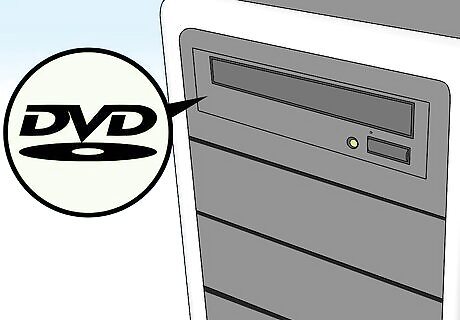
Obtain a DVD drive if necessary. Most Mac computers and many Windows computers don't ship with optical drives (also known as DVD drives) into which you can insert a CD, meaning you might need to buy a USB optical drive. You can find these in tech stores and online. If your computer has an optical drive, look for the word "DVD" on or near the drive. If you don't see "DVD" there, the drive that you have cannot burn CDs and you'll still need to buy an external one. Make sure that your optical drive has burn capabilities. This feature should be mentioned in the product description. If you're using a Mac, you'll need a USB-C optical drive, or a USB 3.0 to USB-C adapter.
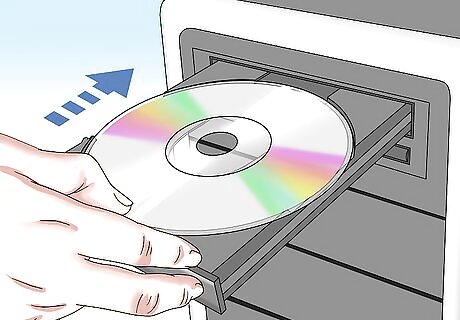
Insert the CD into the DVD drive. Place the CD face-up in the DVD drive's tray, then close the tray.
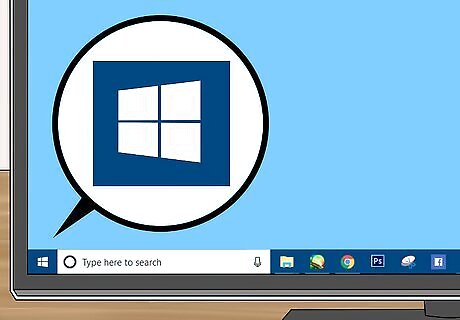
Open Start Windows Start. Click the Windows logo in the bottom-left corner of the screen.
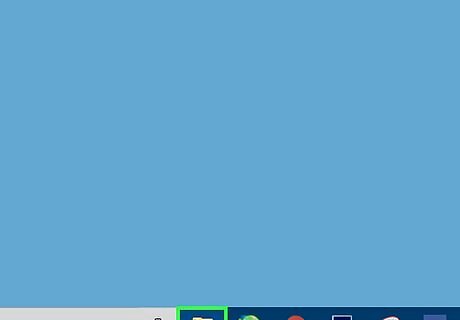
Open File Explorer Windows Start Explorer. Click the folder-shaped icon in the lower-left side of the Start window.
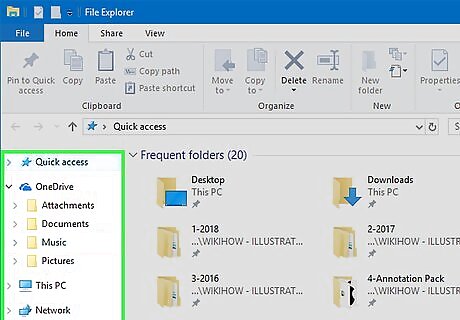
Select a file location. On the left side of the window, click the folder in which the music files that you want to burn are located.

Select files to burn. Click and drag your mouse across the files that you want to burn, or select individual ones by holding down Ctrl while clicking each one that you want to burn.
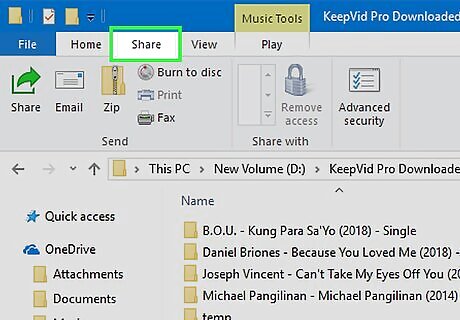
Click Share. This tab is in the upper-left corner of the window. A toolbar will appear at the top of the File Explorer window.

Click Burn to disc. It's an option in the "Send" section of the toolbar. Doing so prompts a pop-up window.
Click Burn. This is at the bottom of the pop-up window.
Click Finish when prompted. This will complete the burn process and, in some cases, eject the burned disc. Your music files are now stored on the CD.
Creating a Storage CD on Mac

Make sure that you have a blank CD. This can be a CD-R or a CD-RW, so long as it is blank.
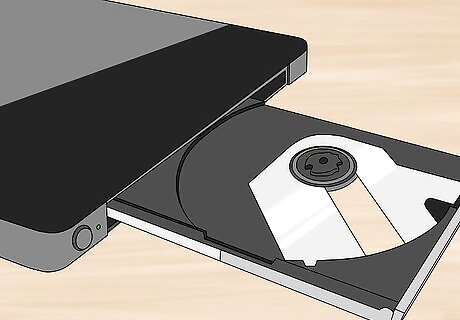
Obtain a DVD drive if necessary. Most Mac computers and many Windows computers don't ship with optical drives (also known as DVD drives) into which you can insert a CD, meaning you might need to buy a USB optical drive. You can find these in tech stores and online. If your computer has an optical drive, look for the word "DVD" on or near the drive. If you don't see "DVD" there, the drive that you have cannot burn CDs and you'll still need to buy an external one. Make sure that your optical drive has burn capabilities. This feature should be mentioned in the product description. If you're using a Mac, you'll need a USB-C optical drive, or a USB 3.0 to USB-C adapter.
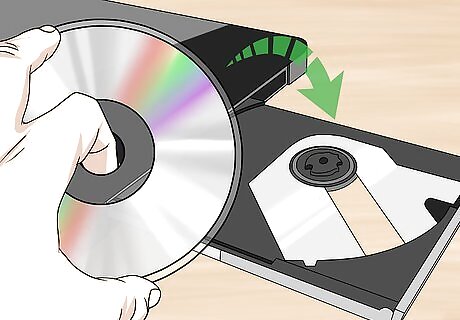
Insert the CD into the DVD drive. Place the CD face-up in the DVD drive's tray, then close the tray.
Open Finder. Click the blue face icon in your Mac's Dock. A Finder window will open.
Select a file location. Click a folder on the left side of the window. This should be a folder that contains music files which you want to burn onto the CD.
Select songs to burn. Click and drag your mouse across the files that you want to burn, or select individual ones by holding down ⌘ Command while clicking each one that you want to burn.
Copy the songs. Click Edit in your Mac's menu bar, then click Copy Items in the resulting drop-down menu. You can also press ⌘ Command+C to copy these files.
Open your CD. Click your CD's name in the left-hand sidebar of the Finder window, or double-click your CD on your Mac's desktop.
Paste in the songs. Click Edit again, then click Paste Items in the drop-down menu. You can also press ⌘ Command+V to paste files.
Click File. It's a menu item in the top-left corner of the screen. A drop-down menu will appear.
Click Burn. This option is in the File drop-down menu, and will have the CD's name to the right of it.
Click Burn when prompted. It's near the bottom of the pop-up window. Your music files will begin burning onto the CD.

Wait for the files to finish burning. When the burn is complete, you'll be prompted to click OK, at which point you can safely eject the disc. Your music files are now stored on your CD.














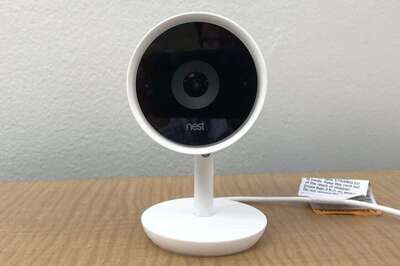


Comments
0 comment